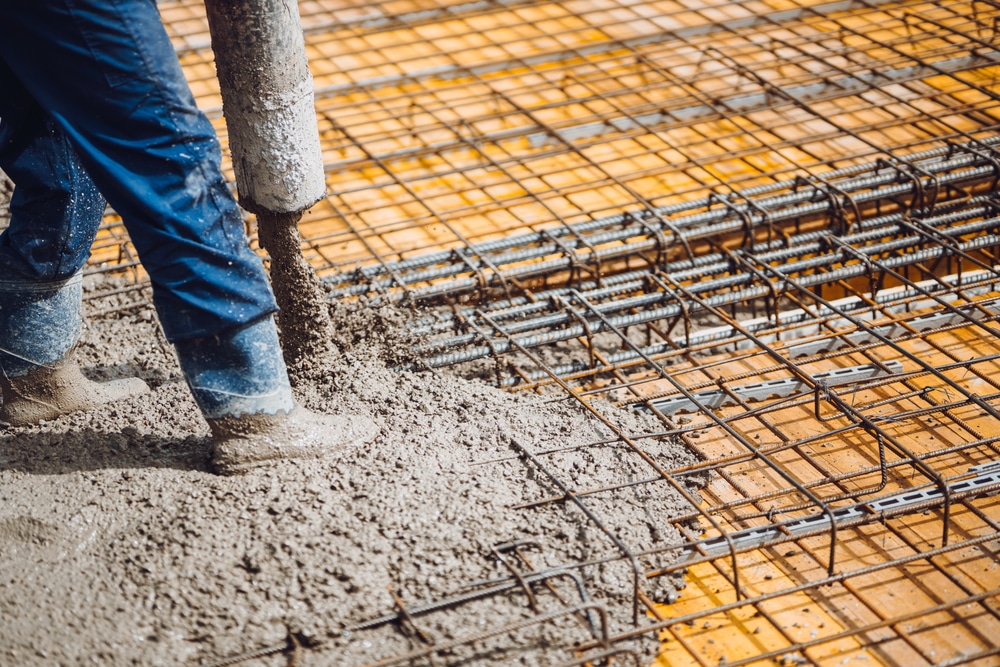Steel Foundations & Underground Structures
April 10, 2024 | Categorized in: Applications

A strong foundation in a building can prevent wall cracks, uneven floors, jammed doors, and gaps in siding. To create solid infrastructure from the ground up, steel foundations support other materials and bear the brunt of the vertical and horizontal load. Steel framing reinforces building materials – the same goes for steel supports within foundations.
How long does steel last underground?
Depending on the soil’s acidity, steel can last anywhere from a few decades to potentially hundreds of years underground. As the alkalinity in the soil increases, so does the lifespan of the steel. Galvanizing or zinc-coating creates corrosive-resistant steel with a longer underground tenure. Just as above ground, oxygen, moisture, and salt can erode steel quickly — so if the steel underground is near seawater, it may deteriorate faster.
Types of steel foundations
Depending on the placement and type of building, foundations utilize steel in multiple ways. Steel rebar, piling, beams, and tubing are structural shapes frequently reinforcing basements or foundational slabs. Some of the most commonly used applications for steel foundations are listed below.
Floating foundation with rebar
A floating foundation is a concrete slab reinforced with rebar and wire mesh. Rebar successfully delays cracking and effectively increases the longevity of the slab foundation. Floating foundations are recommended when building on a surface that might cause differential settlement; in other words, uneven settling of a foundation.
Pier foundations
When building a structure on a slope or soft, unstable soil, steel piers are buried down to the bedrock, creating a pier foundation. In some cases, pipe piling further reinforces the foundation. Additionally, pier and beam foundations use multiple structural steel shapes, creating versatile and vibration-dampening supports.
Perimeter walls
Sheet piling is a quick-to-install material favorable for reinforcing basement perimeter walls. Pipe piling or H-piling can also reinforce perimeter walls. Because sheet piling can be modified easily, some homeowners use it for purely decorative purposes on their basement and retaining walls.
Steel footing
A square post, either made of steel or composed of rebar and concrete, is fixed to the columns of a building to create a steel footing. Full-steel footings are usually placed inside or fastened with concrete anchors to a concrete slab. This type of foundation is suitable for agricultural buildings, detached garages, and bridges.
Other uses for steel underground
Besides foundations, multiple types of underground construction projects use steel. From reinforcing tunnels to sewage and closed-drain systems – cities and rural areas rest on top of steel infrastructure. Steel’s popularity in underground infrastructure has increased in the last few decades thanks to technological advancements in treating and protecting steel. Below are some of the most popular applications for steel underground.
Tunnels
Tunnels save valuable urban space, increase transportation capacity, and are necessary for sewage and irrigation. Sizeable tunnels wouldn’t be structurally sound without steel supports like steel ribs (beams cold-formed into circular shapes). Moreover, tunnel boring machines (TBMs) are giant steel excavators that bore out tunnels in record time. Underground steel-supported tunnels include:
- Mineshafts – in the past, wooden pilings stopped mineshafts from collapsing; however, steel piling creates a much more reliable support system. Furthermore, the mineshaft lifts are made of corrosion-resistant steel and hoisted using reinforced steel cables.
- Subways – rails in subways and their foundations are high-tensile strength steel. Steel piling and beams also reinforce subway tunnel systems.
- Irrigation systems – Sump pumps, closed-drain systems, and sewage lines all rely on steel for support and plumbing. Galvanized steel underground pipe also carries water to farmlands to irrigate crops or supply animal drinking water.
Underground fuel tanks
Chemical and underground fuel storage tanks use steel, fiberglass, and cathodic protection to keep their contents safe. Water storage tanks also use steel construction to resist subterranean pressure and corrosion. Although steel can last for years underground, these tanks require protection from zinc and other materials to ensure their longevity.
Parking garages
The foundations for parking garages rely on steel to support the weight of vehicles driving over them. Rebar, piling, and support beams are all applied to the construction of parking garages and most of the foundational systems listed above. Steel guard rails also help less aware drivers avoid collisions with parking garage walls.
Looking for foundational steel?
Steel ensures your buildings and large construction projects get the support they need. Whether you’re sourcing materials for a skyscraper foundation or need rebar for a floating slab, Service Steel has your back. We offer a variety of services such as cambering and flame cutting so you can get custom, structural steel shapes on time. Contact Service Steel today and get the foundational steel you need for your next big project!